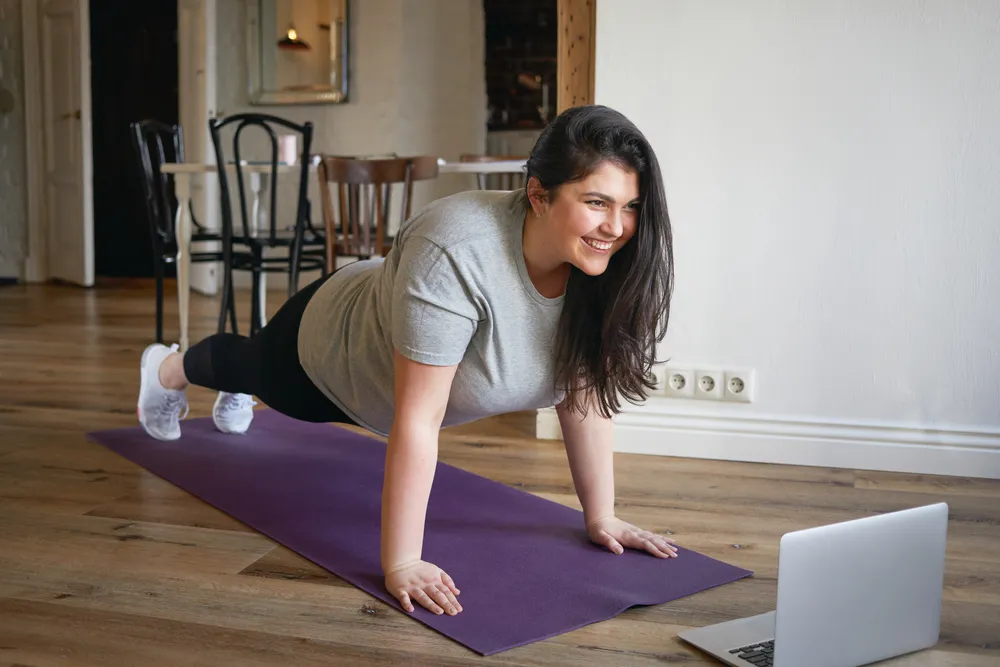
Finding What Works for You and your Daily Routine
Not all workouts are created equal, and when it comes to burning fat, there’s no single magic formula. What works for your best friend or gym buddy might not suit your fitness level, schedule, lifestyle, or preferences. The key to burning fat effectively isn’t about following a rigid plan or finding the perfect workout; it’s about discovering exercises that fit your lifestyle and goals.
The most important factor in achieving lasting results is consistency. It’s not about starting an intense routine for a few weeks only to burn out and quit. To see real change, exercise needs to become part of your daily routine—woven into your schedule in a way that feels manageable and sustainable. Whether it’s taking a walk during lunch, squeezing in a 20-minute workout before breakfast, or doing bodyweight exercises while watching TV, regular movement beats short-lived bursts of effort every time.
Why Exercise Matters for Fat Loss
To lose body fat, your body must burn more calories than it consumes. Exercise supports this by boosting calorie burn, increasing metabolism, and helping you maintain lean muscle mass.
It’s particularly powerful when paired with healthy eating.
The key? the “best” workout is the workout you can stick to over the long term.

The Best Fat-Burning Exercises
Different exercises target fat loss in unique ways, and the ideal combination often depends on your goals, fitness level, and time constraints.
When it comes to burning fat, focusing on total-body exercises is a game-changer. These workouts engage multiple muscle groups at the same time, making them more efficient at burning calories and boosting metabolism. Total-body exercises also mimic natural, functional movements, improving your strength and fitness for everyday tasks.
Instead of isolating certain muscles (like biceps or calves), full-body movements create a bigger demand for energy, making them ideal for fat loss. They also offer variety, keeping your routine exciting and sustainable.
Here are some of the best fat-burning exercises that incorporate total-body movements, helping you maximise results in less time.

High-Intensity Interval Training (HIIT): Full-Body Calorie Blaster
HIIT naturally lends itself to total-body movement. Whether you’re doing burpees, mountain climbers, or sprint intervals, HIIT workouts recruit multiple muscle groups while elevating your heart rate. The intensity creates an afterburn effect, where your body continues to burn calories long after your workout ends.
Examples of Total-Body HIIT:

Burpees

Sprints with Recovery

Mountain Climbers
HIIT fits seamlessly into any environment, and Australia offers plenty of opportunities to incorporate it outdoors. Picture yourself doing burpees and sprints on the grassy fields of your local park or trying mountain climbers on the soft sand at the beach for added resistance. Medical research has shown that incorporating total-body movements into HIIT routines burns more calories in less time than steady-state cardio. It also found that this type of routine improves fat loss. The combination of cardio and strength makes it an ideal workout for busy lifestyles or anyone looking for variety.
But HIIT is not for everyone, and there are plenty of alternative ways to burn fat.
Walking: The Fat-Burning Workout for Everyone
Walking is one of the simplest and most effective ways to burn fat—and it’s something nearly anyone can do, regardless of fitness level.
While it may not have the intensity of HIIT or the muscle-building benefits of strength training, walking is a low-impact, sustainable exercise that burns calories, improves cardiovascular health, and can easily be integrated into daily life.

Why Walking is Great for Fat Loss

Ways to Walk
- Brisk Walking: Aim for a pace where your heart rate increases but you can still hold a conversation. A 30-minute walk can burn between 150–200 calories, depending on your weight and speed.
- Hiking: Explore Australia’s stunning bushwalking trails, which add the challenge of uneven terrain and inclines for extra calorie burn.
- Beach walking: where the sand adds extra effort for your calves and core.
- Lunchtime Walks: Squeeze in a quick walk during your lunch break or park further away from work or the shops to add extra steps to your day.

Science Says:
Why It Works for Everyone:
Pro Tip:
Strength Training: Total-Body Power for Fat Burn

Why Strength Training works Weight Loss

What It Looks Like
- Squats: Use your legs, glutes, and core all at the same time.
- Deadlifts: A movement that works your legs, back, and core.
- Push-Ups: Use your chest, arms, and shoulders while also engaging your core.
- Kettlebell Swings: A fun exercise that works your legs, hips, and shoulders.

How to Do It
- At home: Try bodyweight exercises like push-ups or squats. Use resistance bands for extra challenge.
- At the gym: Use dumbbells, barbells, or kettlebells for more variety.

Why It Works for Everyone:
You don’t need heavy weights to start strength training. Even light weights, resistance bands, or bodyweight exercises can help you build strength and burn calories. Plus, it’s easy to adjust the difficulty as you get stronger.
Pro Tip:
Start with 2–3 strength training sessions per week. Rest between sessions so your muscles can recover and grow stronger.

Cardio: A Simple Way to Burn Calories and Improve Fitness

Why Cardio Works for Weight Loss
Cardio exercises, such as swimming or walking, help create a calorie deficit, which is key for weight loss. Swimming is a low-impact workout that burns calories while being gentle on your joints. this Swimming can promote weight loss because it’s a full-body exercise that improves muscle tone and cardiovascular health. For beginners, swimming is an excellent option because it’s adaptable to all fitness levels.

Adding Variety with Low-Impact Cardio
After pregnancy or during recovery from illness or injury, low-impact cardio exercises can be a great way to ease back into fitness. Activities like walking or stationary cycling are gentle yet effective at boosting metabolism and improving endurance. As noted in, starting with shorter cardio sessions and gradually increasing intensity is ideal for long-term success.

The Benefits of Cardio for Everyone
Whether you’re new to exercise or experienced, cardio helps:
- Burn calories efficiently.
- Improve your heart and lung health.
- Increase energy levels for daily tasks.
Pairing cardio with a healthy diet is one of the simplest ways to achieve sustainable weight loss. For best results, aim for 30 minutes of moderate-intensity cardio most days of the week.
Integrating Total-Body Workouts into Your Routine
- Mix It Up: Alternate between HIIT, strength training, walking and cardio to keep your routine balanced and engaging.
- Use Your Environment: Parks, beaches, and trails in Australia provide natural opportunities for total-body movement.
- Focus on Functional Fitness: Choose exercises that mimic everyday movements, such as squats, pulls, and pushes, to improve your strength and mobility in daily tasks.
- Add Everyday Movement: Carry groceries, climb stairs, or do lunges while brushing your teeth to sneak in extra activity.


Exercise That Fits Your Life
Fat loss isn’t about following a rigid routine – it’s about making movement a natural part of your lifestyle. By focusing on total-body exercises, you can burn more calories, build strength, and improve your fitness in ways that feel sustainable and rewarding.
For personalised advice, visit My Weight Loss Clinic. Their expert team can help you create a tailored plan that integrates exercise and nutrition into your daily routine for long-term results.
Frequently Asked Questions about Fat Burning Exercises
Further Reading
Keating, S. E., Johnson, N. A., Mielke, G. I., & Coombes, J. S. (2017). A systematic review and meta-analysis of interval training versus moderate-intensity continuous training on body adiposity. Obesity Reviews, 18(8), 943–964. https://doi.org/10.1111/obr.12536
Murphy, M. H., Blair, S. N., & Murtagh, E. M. (2009). Accumulated versus continuous exercise for health benefit: A review of empirical studies. Sports Medicine, 39(1), 29–43. https://doi.org/10.2165/00007256-200939010-00003
My Weight Loss Clinic
We specialise in education and empowerment. We want this to be the last weight loss program you do.
"*" indicates required fields